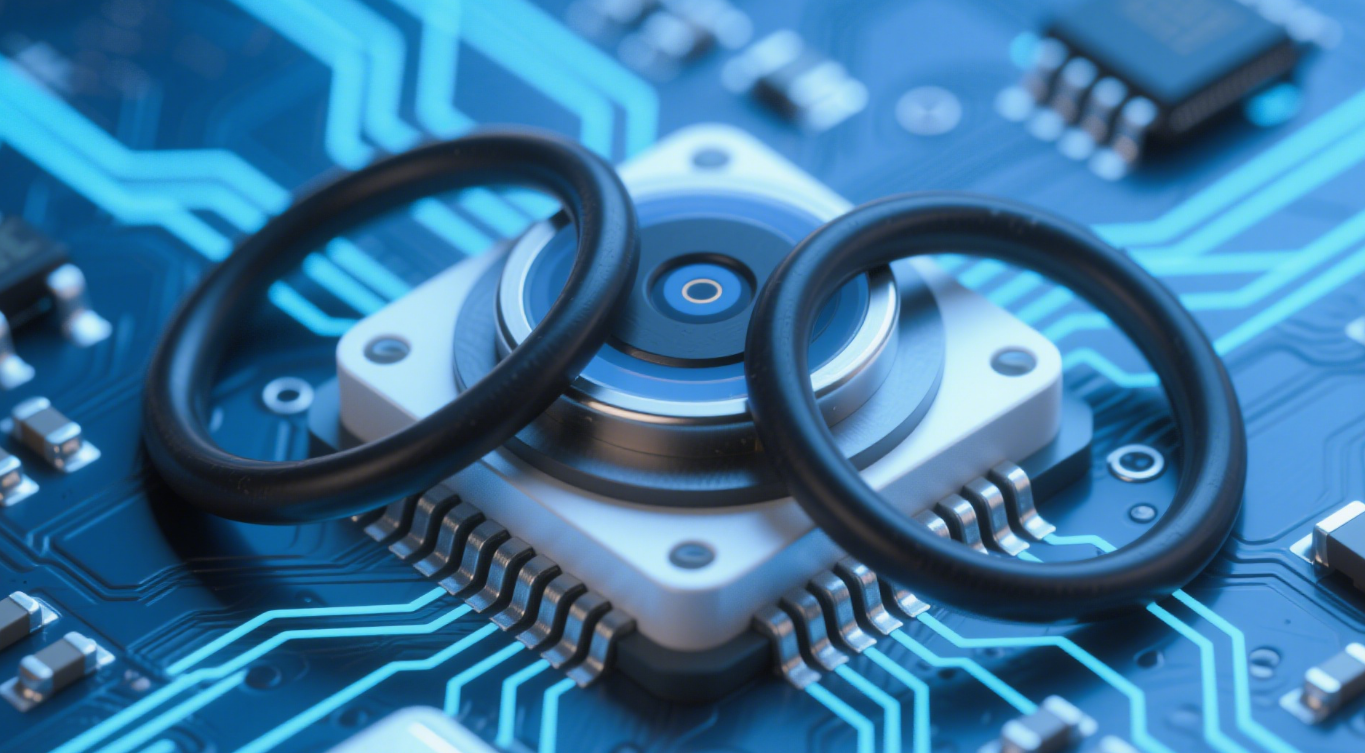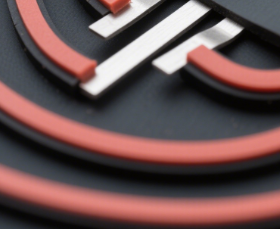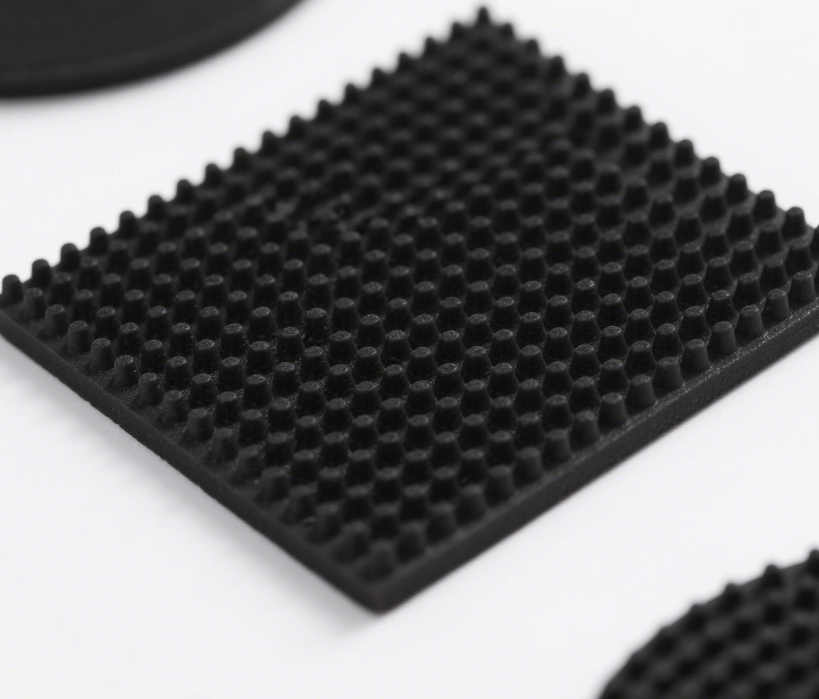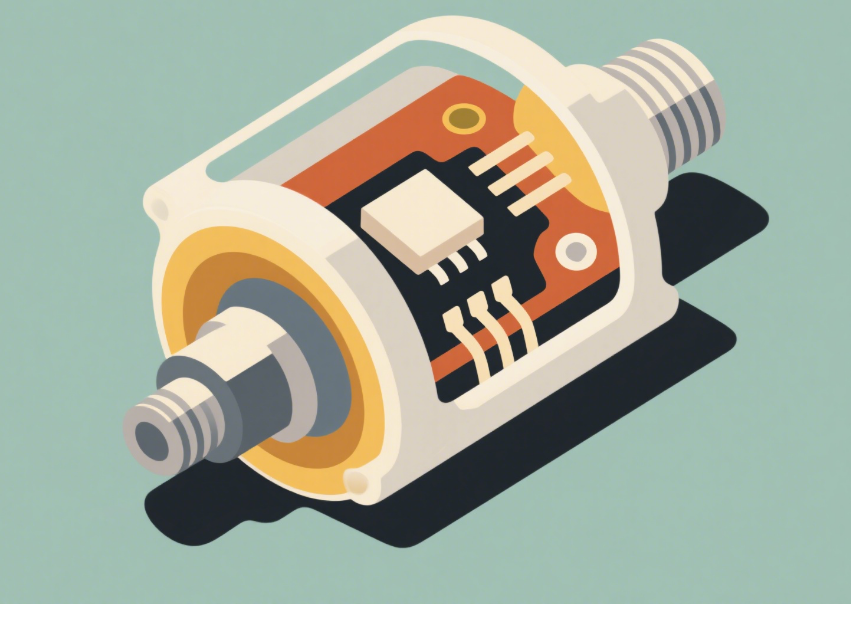Specific Applications of Conductive Rubber in Automotive Connectors
2025/05/12
0
Power System
Conductive rubber plays a crucial role in the power battery connection system of new energy vehicles. The power battery pack is composed of multiple battery modules, and reliable electrical connections and good sealing are required between the modules. Conductive rubber connectors can achieve stable power transmission between battery modules, while preventing the leakage of electrolyte and the intrusion of external moisture, ensuring the safety and stability of the battery system. In addition, in the engine management system of traditional fuel vehicles, conductive rubber is used to connect sensors and control units, ensuring accurate signal transmission, helping the engine to precisely control fuel injection and ignition timing, and improving fuel economy and power performance.
Conductive rubber plays a crucial role in the power battery connection system of new energy vehicles. The power battery pack is composed of multiple battery modules, and reliable electrical connections and good sealing are required between the modules. Conductive rubber connectors can achieve stable power transmission between battery modules, while preventing the leakage of electrolyte and the intrusion of external moisture, ensuring the safety and stability of the battery system. In addition, in the engine management system of traditional fuel vehicles, conductive rubber is used to connect sensors and control units, ensuring accurate signal transmission, helping the engine to precisely control fuel injection and ignition timing, and improving fuel economy and power performance.
Vehicle Body Electronic System
The vehicle body electronic system of an automobile contains numerous components, such as headlights, window lifters, central door locks, etc. Conductive rubber connectors are used for the electrical connections of these components. They can not only achieve stable signal transmission to ensure the normal operation of each component but also, through their sealing performance, prevent rainwater and dust from entering the internal parts such as headlights, avoiding short-circuit damage caused by water ingress and extending the service life of the components.
The vehicle body electronic system of an automobile contains numerous components, such as headlights, window lifters, central door locks, etc. Conductive rubber connectors are used for the electrical connections of these components. They can not only achieve stable signal transmission to ensure the normal operation of each component but also, through their sealing performance, prevent rainwater and dust from entering the internal parts such as headlights, avoiding short-circuit damage caused by water ingress and extending the service life of the components.
In-vehicle Communication and Entertainment System
With the development of intelligent connected vehicles, the in-vehicle communication and entertainment system has become increasingly complex, including in-vehicle navigation, multimedia entertainment, vehicle networking modules, etc. Conductive rubber connectors are used to connect various electronic components of these systems. They can effectively shield electromagnetic interference, ensure the purity and stability of signal transmission, and provide users with a clear and smooth communication and entertainment experience. At the same time, their sealing performance can also protect the internal electronic components from the influence of the external environment.
With the development of intelligent connected vehicles, the in-vehicle communication and entertainment system has become increasingly complex, including in-vehicle navigation, multimedia entertainment, vehicle networking modules, etc. Conductive rubber connectors are used to connect various electronic components of these systems. They can effectively shield electromagnetic interference, ensure the purity and stability of signal transmission, and provide users with a clear and smooth communication and entertainment experience. At the same time, their sealing performance can also protect the internal electronic components from the influence of the external environment.
Safety System
In the automotive safety system, such as the airbag system and the Anti-lock Braking System (ABS), conductive rubber connectors are of great importance. The airbag system has extremely high requirements for the timeliness and accuracy of signal transmission. Conductive rubber connectors can ensure that in the event of a collision, the sensor signals are quickly and accurately transmitted to the control unit, enabling the airbag to deploy promptly and reliably. In addition, its good sealing performance and environmental resistance can ensure that the safety system remains in normal operation under various complex working conditions, providing protection for the life safety of drivers and passengers.
In the automotive safety system, such as the airbag system and the Anti-lock Braking System (ABS), conductive rubber connectors are of great importance. The airbag system has extremely high requirements for the timeliness and accuracy of signal transmission. Conductive rubber connectors can ensure that in the event of a collision, the sensor signals are quickly and accurately transmitted to the control unit, enabling the airbag to deploy promptly and reliably. In addition, its good sealing performance and environmental resistance can ensure that the safety system remains in normal operation under various complex working conditions, providing protection for the life safety of drivers and passengers.
Challenges and Development Trends of Conductive Rubber Applications
Although conductive rubber is widely used in automotive connectors, it also faces some challenges. For example, with the continuous increase in the integration of automotive electronic devices, stricter requirements are imposed on the volume and weight of conductive rubber, and the development of thinner, lighter, and more miniaturized products is required. At the same time, under extreme environments such as high temperature and high humidity, the electrical conductivity and sealing performance of conductive rubber may be affected, and it is necessary to further improve its environmental resistance.
Although conductive rubber is widely used in automotive connectors, it also faces some challenges. For example, with the continuous increase in the integration of automotive electronic devices, stricter requirements are imposed on the volume and weight of conductive rubber, and the development of thinner, lighter, and more miniaturized products is required. At the same time, under extreme environments such as high temperature and high humidity, the electrical conductivity and sealing performance of conductive rubber may be affected, and it is necessary to further improve its environmental resistance.
In the future, the development trends of conductive rubber are mainly reflected in the following aspects: First, research and development of new conductive fillers and rubber matrices to improve the comprehensive performance of conductive rubber, such as the development of materials with high electrical conductivity, low resistance, and high stability; Second, the adoption of advanced preparation processes to achieve precise and customized production of conductive rubber to meet the increasingly diverse needs of the automotive industry; Third, strengthening the composite research of conductive rubber with other materials to develop composite materials with multiple functions and expand its application scope in the automotive field.

















